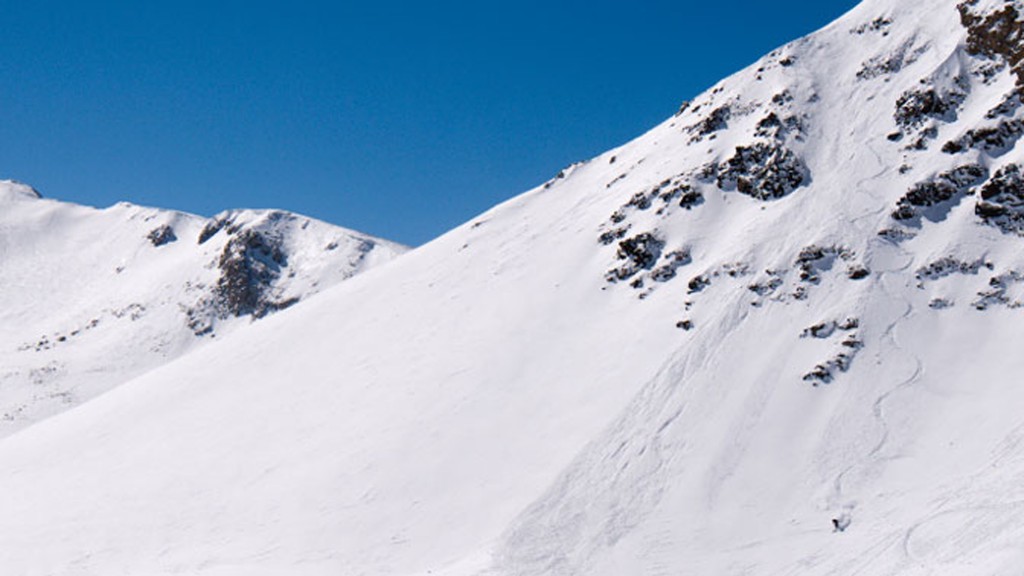“I woke up and I was in a sled going toward the bottom of the mountain,” A.J. Schonenburg (‘12) recalls. “Apparently I caught an edge and I smacked down and I don’t remember any of it.”
Earlier that day, one thousand feet lay between Schonenburg and the finish line. He waited with the wind howling at his back, and the tips of his newly waxed skis dangling over the edge of the lip. After digging his poles into the snow he slid down the course, whisking past gate after gate. But suddenly everything became a white blur. A concussion.
When athletes decide to participate in sports, they often know the potential dangers within their sports. Basketball players know that a “box out” can get physical, and football players surely know that tackles can lead to concussions and other injuries. Skiing, along with most other sports, can be dangerous. Yet what distinguishes skiing from many other non-extreme sports is that skiers never know what Mother Nature has in store. In order to experience the best ride, skiers often put themselves in dangerous situations by virtue of their environment.
Abby Bromberg (‘13) has experienced firsthand the butterflies and nervous excitement that comes when one stands in between two cliffs, pondering whether or not to advance. Bromberg mainly participates in non-competitive backcountry skiing, which involves areas of the mountain that are not groomed or maintained. Besides the thrill of skiing in these areas, Bromberg enjoys the aesthetic appeal of the snow-covered mountains.
“The mountain brings things into clarity for me,” Bromberg said. “I like it a lot better than the smog of the bay area. You feel like you are on the top of the world.”
But these aspects of nature can also pose danger. Backcountry skiers like Bromberg maneuver through cliffs, blizzards, trees and hidden rocks in order to blaze their own trails and discover new terrain. One wrong turn or miscalculated landing can result in severe injuries or even death. So what makes it all worth it?
“The adrenaline rush,” Bromberg said. “It’s kind of like a drug to people. Adrenaline releases a chemical in your brain so people get addicted to it.”
When they get into difficult situations, skiers must instantaneously decide whether or not to follow their gut instincts.
“There’s this one point where you move too far forward and there’s no point going back,” Bromberg said. “That is the best feeling I’ve ever had. You feel yourself going over the tipping point and it’s like nothing else.”
Bromberg has been skiing since she was three years old and it is this rush of adrenaline that has fueled her love for the sport.
Like Bromberg, Marco Vienna (’13) also began skiing at an early age and participates mostly in freestyle skiing after he quit racing. Freestyle skiing involves aerials, and requires the skier to have determination and strong will.
“I remember the first time I ever landed a 720 was the best feeling,” Vienna said. “You fail at it so much when you’re trying and then when you finally [land the trick], it’s the ultimate gift.”
Vienna also enjoys back-country skiing and has had his fair share of dangerous situations. Despite these dangers, Vienna uses fear to his advantage.
“My mentality going into a dangerous situation is all about mitigating my risks but at the same time staying confident because if you hesitate for a split second, you will get hurt,” Vienna said.
Schonenburg agrees with Vienna that skiing is physically demanding, but believes that it has an important mental component as well.
“A lot of it is mental,” Schonenburg said.“ At a certain point, once you reach your legs’ physical capacity, it’s how hard you push yourself.”
While skiing can be highly competitive and dangerous, it also provides an escape from athletes’ busy lives and allows them to focus on one thing at a time.
“When I go out on the slopes I forget all of the homework, tests and stuff at school. It’s also a huge thrill factor,” Meredith said.
This serene escape comes with a downside: time commitment. With the nearest resorts being at least three hours away, Paly skiers are forced to travel long distances to hit the slopes.
“I don’t get any of my weekends during the winter. That’s a big sacrifice,” Schonenberg said. “I don’t have much time to study on the weekends and also we have away races where I have to skip school.
Skiing might be a huge time commitment, but its participants feel that the three hour drive is worth it. The rush of adrenaline that comes from hopping a cliff, seeing the world from the perspective of the snow-covered mountains, and the escape from the stresses of everyday life are all factors that draw people to the slopes.
“The laid back nature of the sport as well as the competitiveness define what skiing truly is: The best sport in the world,” Vienna said.




